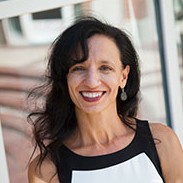Art: It Isn’t Just For Arts Non-Profits
ArtandSeek.net October 17, 2017 21We invited the panelists for this year’s TACA Perforum to share their thoughts in advance of Monday’s conversation. Our series of guest blogs begins today with Zannie Giraud Voss, She is the chair of Arts Management and Arts Entrepreneurship and the director of the National Center for Arts Research at SMU. And she will moderate the panel.
Zannie Giraud Voss
Voss will be moderating the Perforum.
Last year’s Perforum was a rewarding discussion focused on different ways to coalesce around a shared vision for arts and culture in a city. Attendees brought to the forefront many vital issues in response to the discussion. One that stood out for the Perforum Committee was a desire to explore the relationship between arts organizations and the larger fabric of personal artistic expression, arts participation and impact.
This topic had particular resonance for me, having just spent time researching the vastness of artistic activity and participation in the U.S. In response to the proposed elimination of federal arts funding, SMU’s National Center for Arts Research dug into the data to see what useful, relevant information it might reveal. It resulted in this report, which shows that the arts are neither elitist nor are they located just on the coasts or in big cities. What’s more, they are just the tip of the larger nonprofit arts iceberg. There is a wealth of artistic and cultural offerings provided by nonprofit organizations whose primary mission lies in other sectors such as health, education, and social services, but that engage people in a vast array of arts and cultural experiences. This is in addition to the work of the 49 percent of Americans who personally engage in the arts as professional and amateur artists, according to Americans for the Arts. What are creative intersections between arts organizations and art that takes place in the broader ecology?
We’ve titled this year’s Perforum Cross Sector Collaboration: Intersections between Arts Organizations and the Broader Arts Ecology. There are already great examples of cross sector collaboration having a substantial impact in Dallas. The intent of the panel is to spur even more ideas for future initiatives that fuel successful cross-sector collaborations in North Texas. We will spend time together on a Monday morning hearing about instances of these partnerships happening across the nation, contemplating why they are important, considering which models work best, and taking it from there.
We have invited four individuals with varying vantage points to share with us their experience.
- Cézanne Charles, Director of Creative Industries at Creative Many, a Detroit-based organization that develops creative people, creative places and the creative economy for a competitive Michigan through research, advocacy, professional practice and communications.
- Lauren Kelley, Executive Director of the Sugar Hill Children’s Museum of Art & Storytelling in New York, a program of Broadway Housing Communities (BHC). BHC, which has pioneered high-impact solutions to the challenges of deep generational poverty and homelessness in the underserved communities of Upper Manhattan, conceived of Sugar Hill Children’s Museum of Art & Storytelling not only as a stimulating space for neighborhood families to gather and share in cultural programs, but as a setting to actively address the educational needs of the community’s youngest children, many from families challenged by poverty, little formal education, and a lack of proficiency in the English language.
- Josephine Ramirez, Former Portfolio Director and Arts Program Director at the James Irvine Foundation, where she was key in carrying out the Foundation’s promotion of arts engagement that embraces and advances the diverse ways that we experience the arts, and that strengthens our ability to thrive together. She also was instrumental in shaping the evolution of the Foundation’s Arts program, exploring ways that creative expression can give voice and visibility to the millions of Californians who are cut off from economic and political opportunity.
- Susan Saloom, Military and Veterans Arts Initiative Field Specialist, Americans for the Arts’ National Initiative for Arts & Health in the Military, which advances the arts in health, healing, and healthcare for military service members, veterans, their families, and caregivers.
Arts organizations’ can only strengthen their ties in the community’s fabric by connecting to the broader ecology of arts activity. This year’s Perforum is intended to open the door to a wider conversation. I hope you’ll join us and take part in the discussion.











